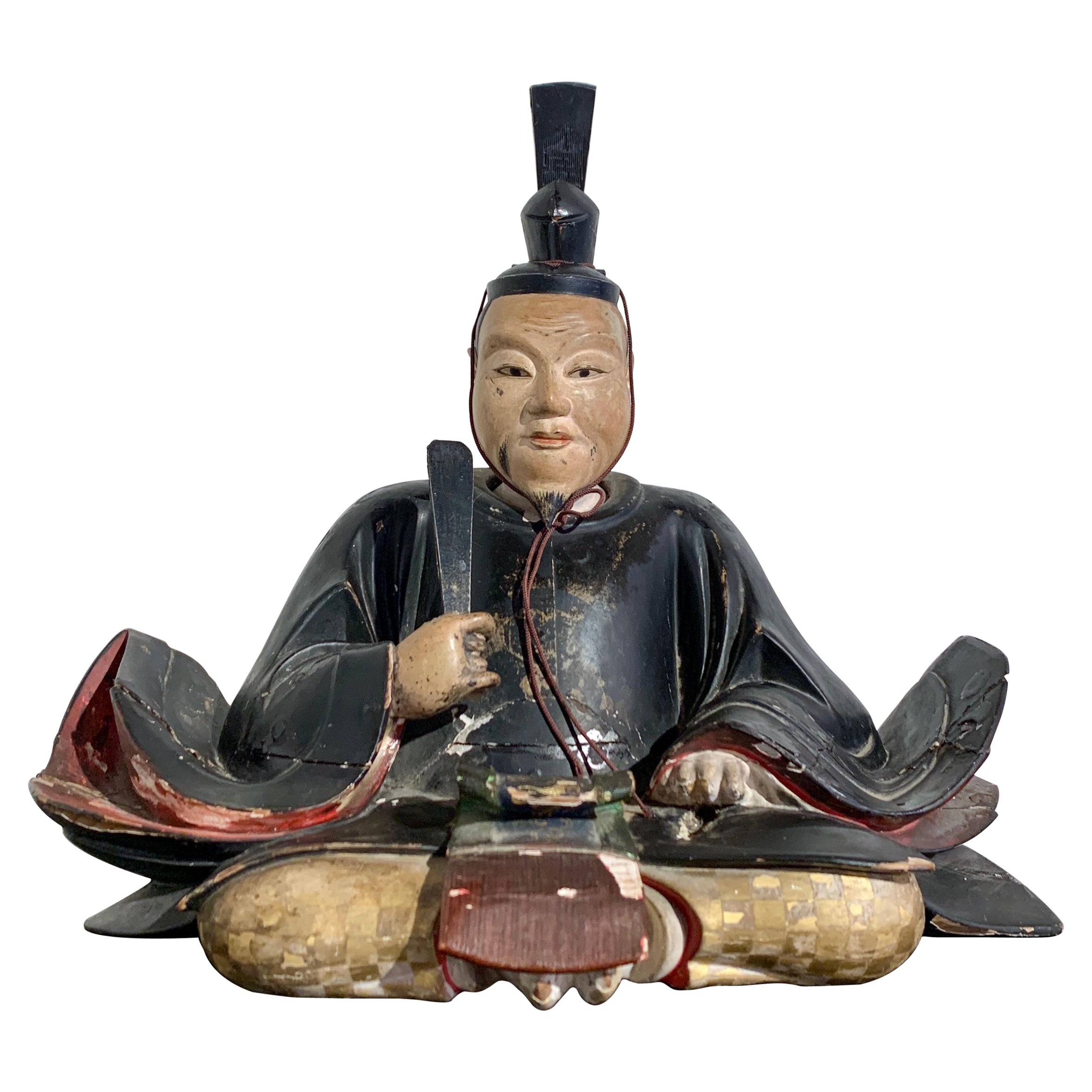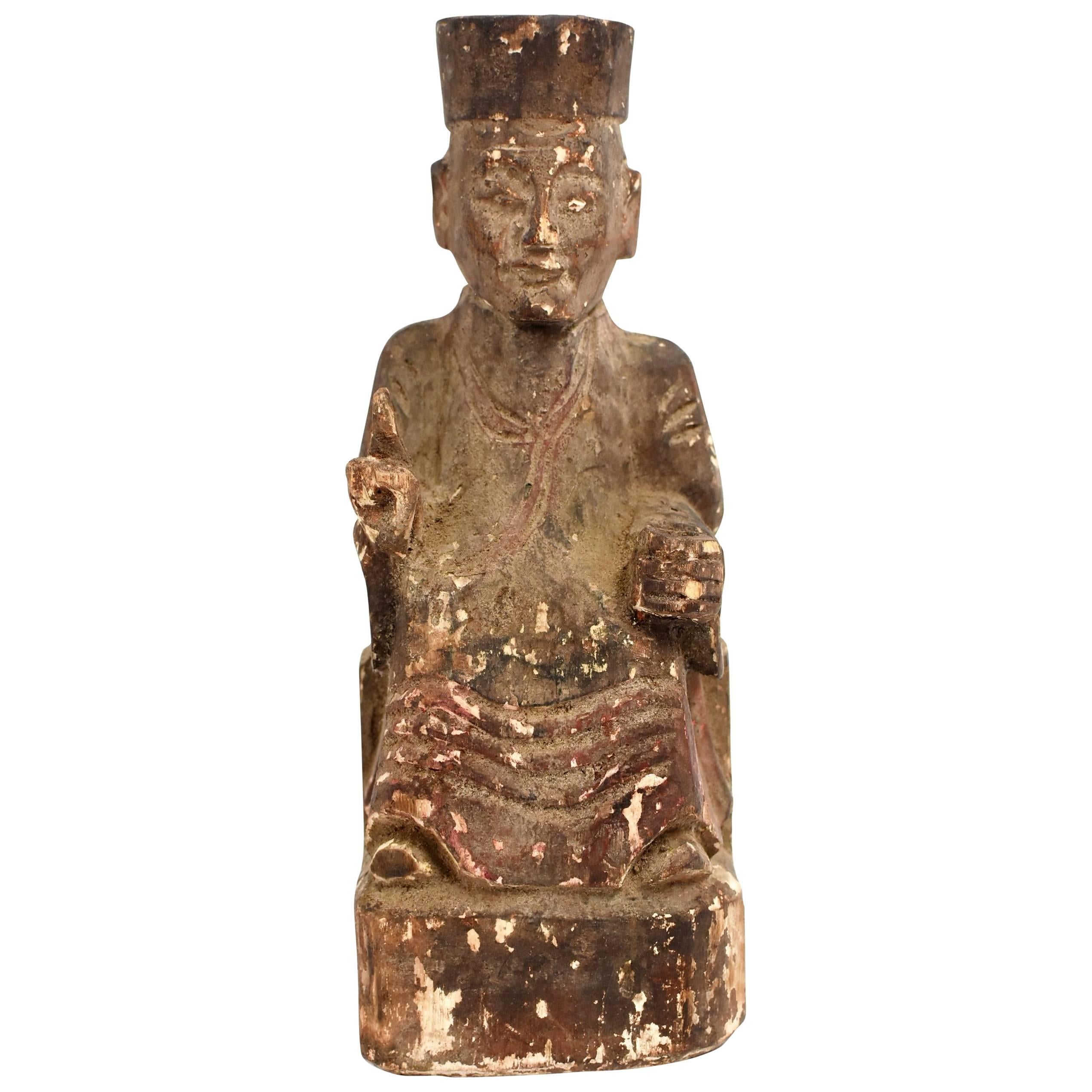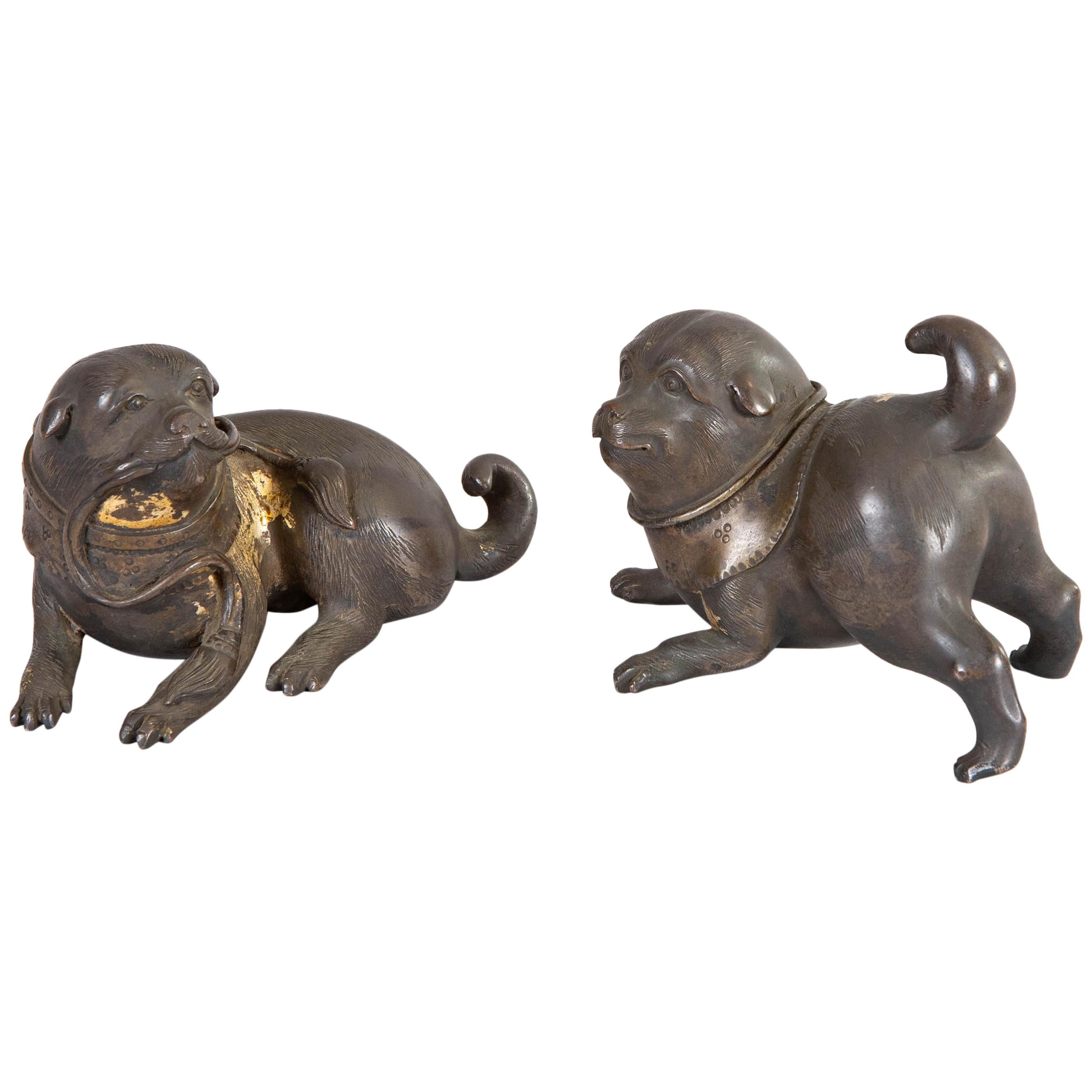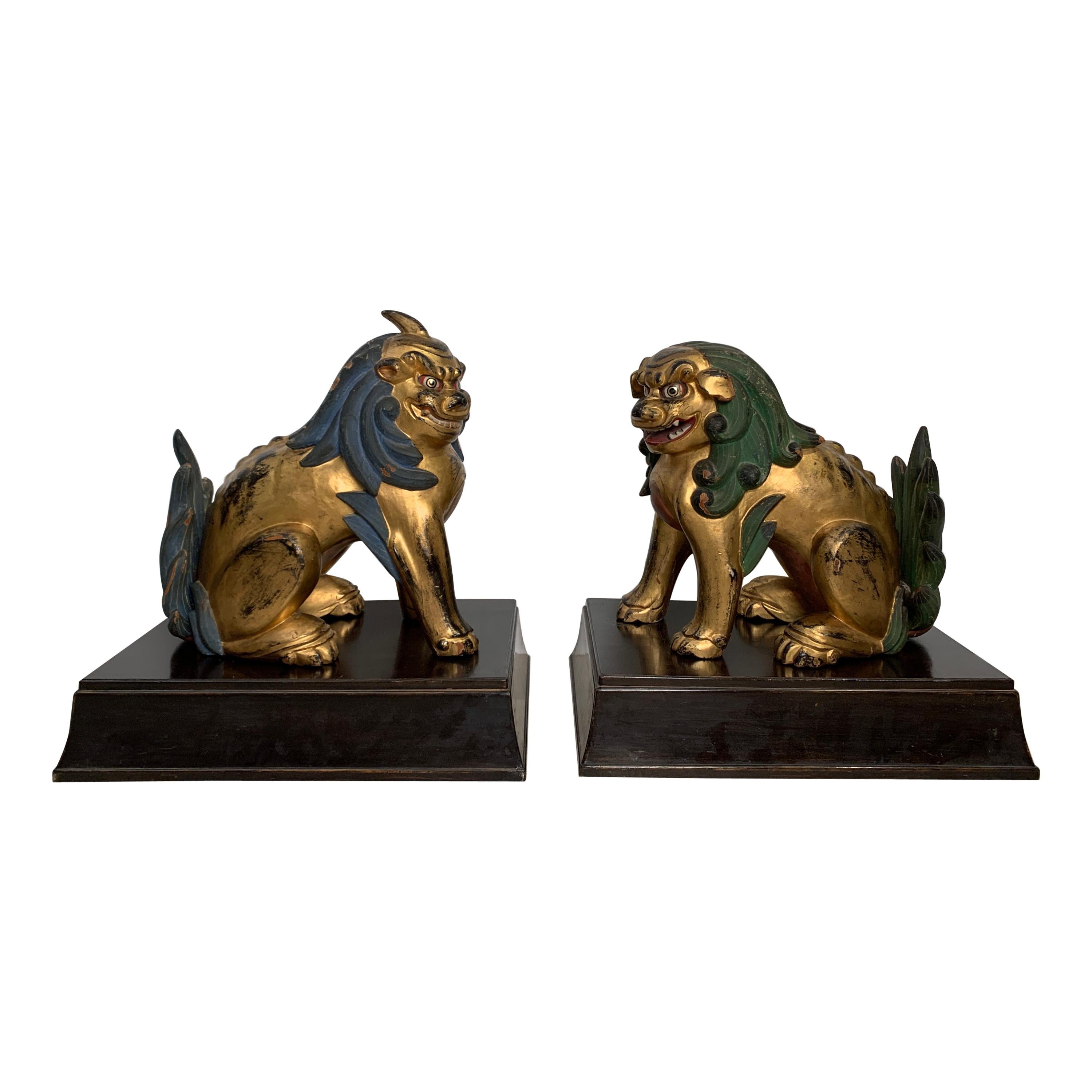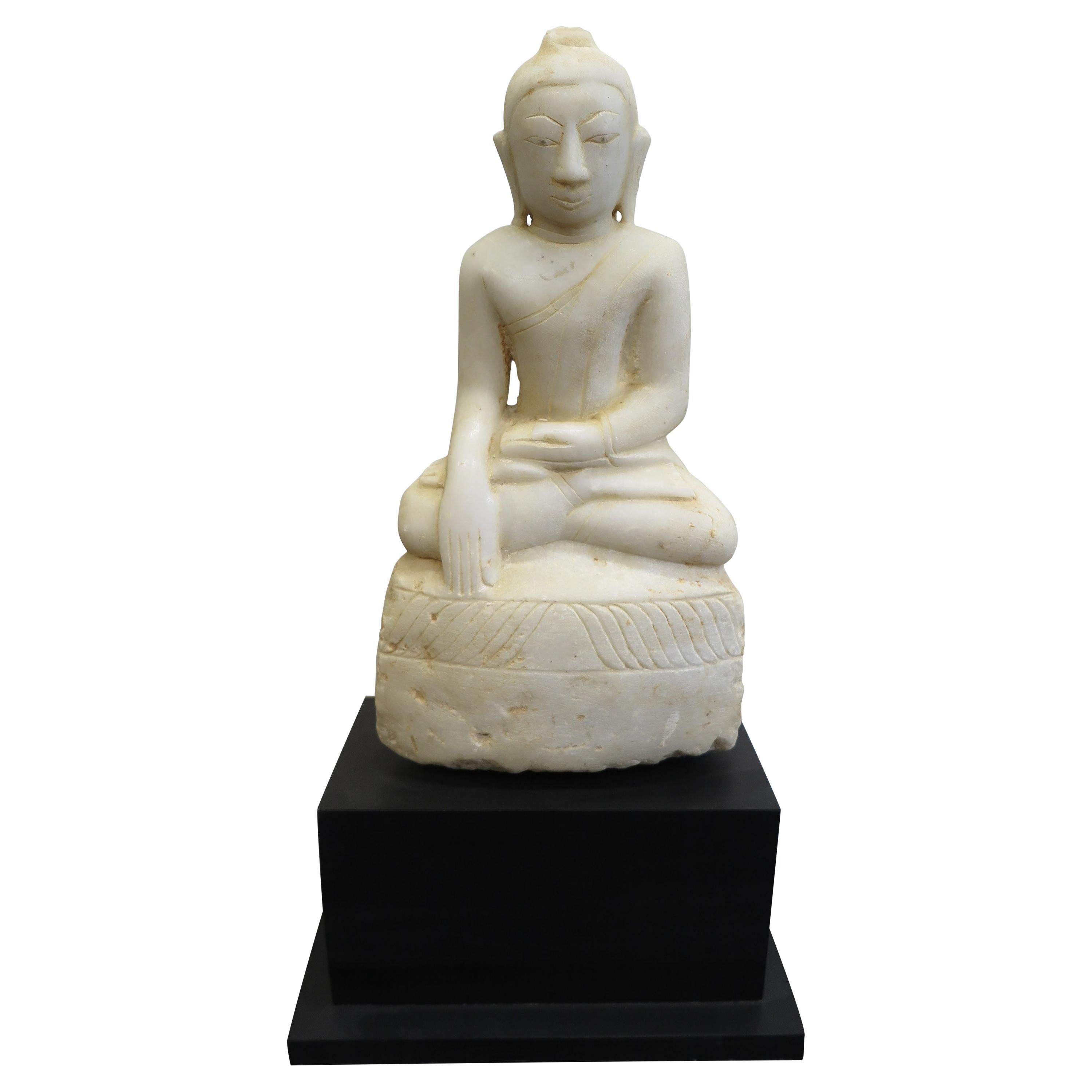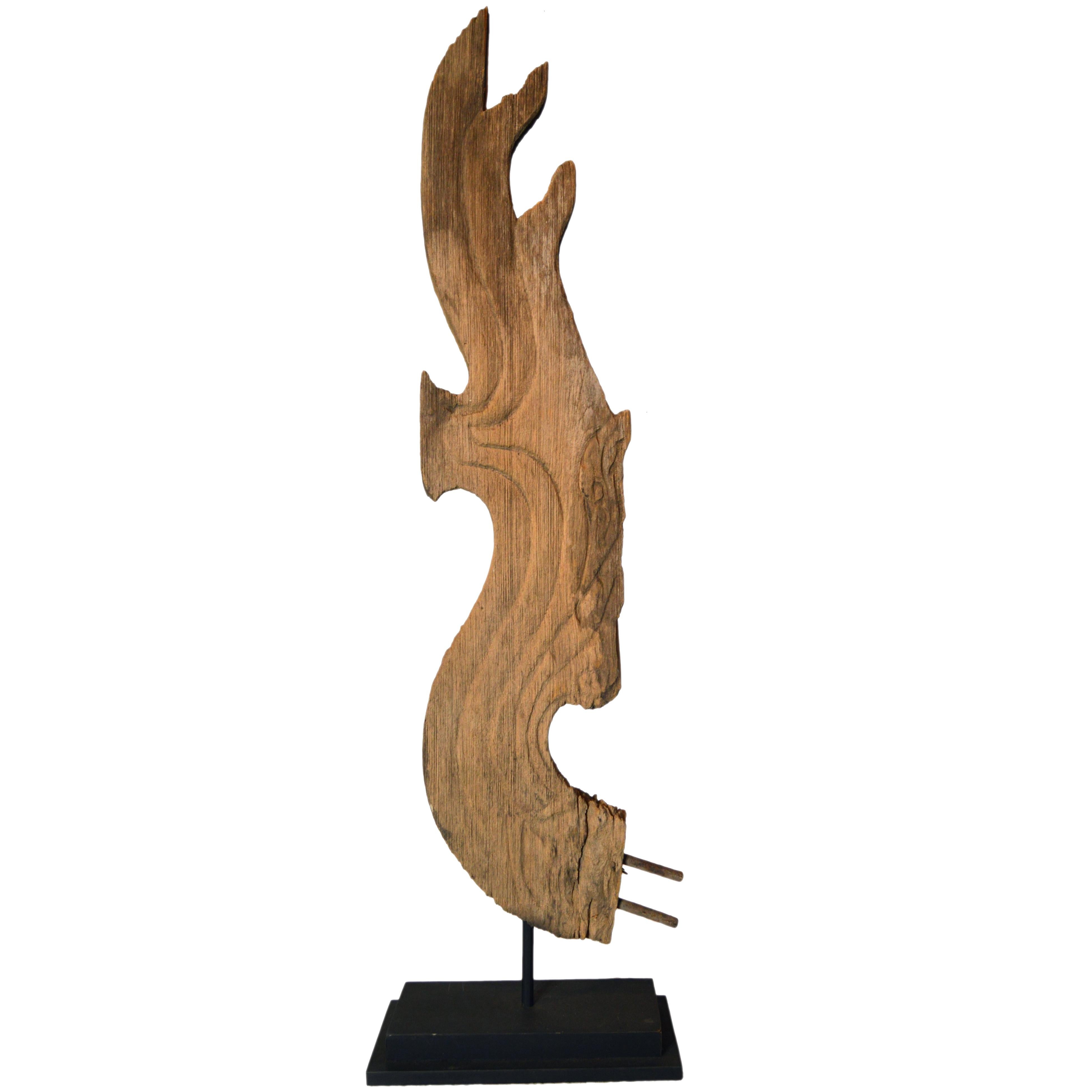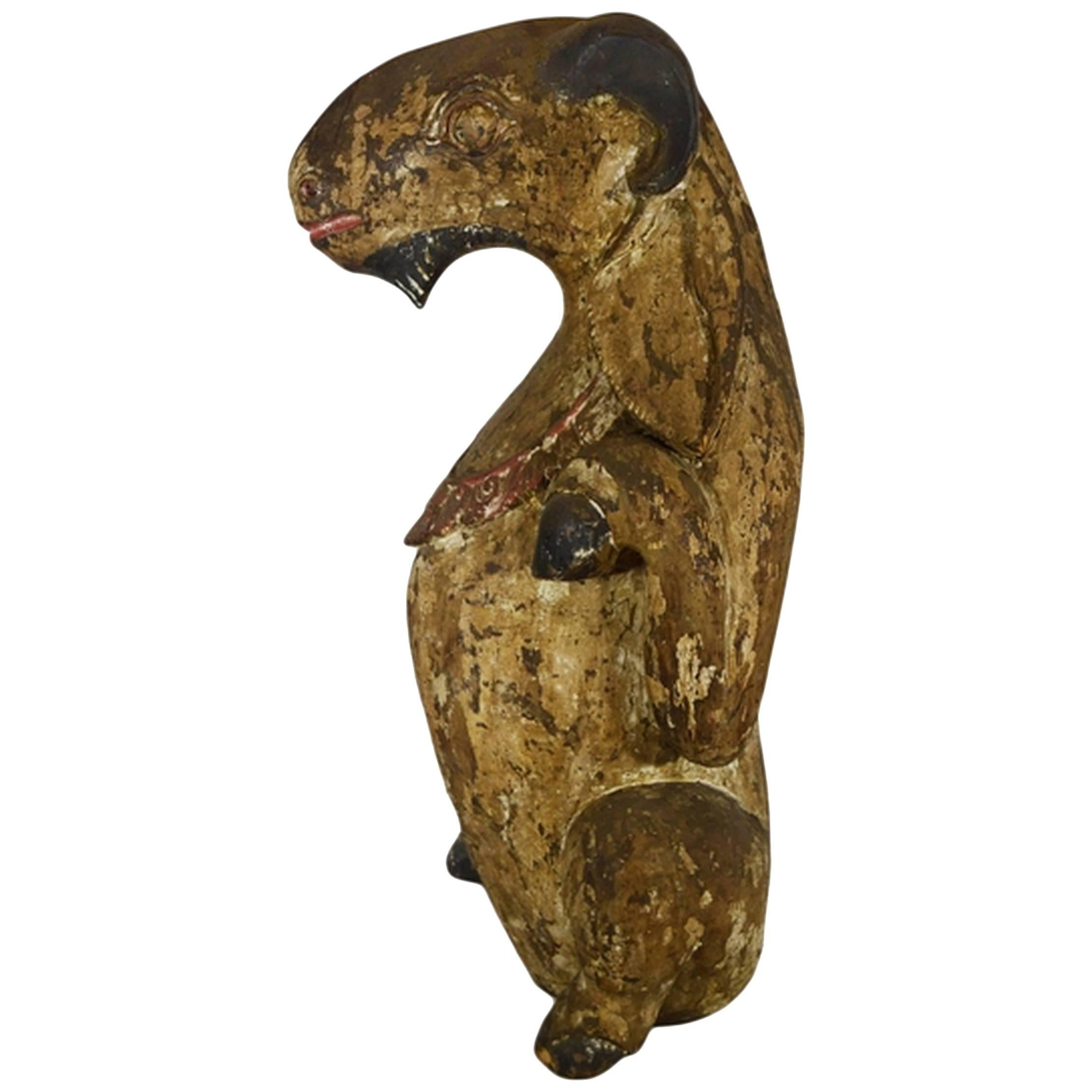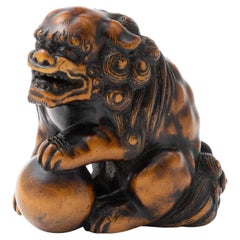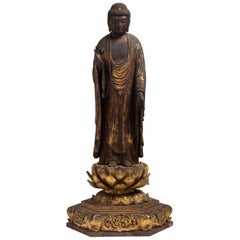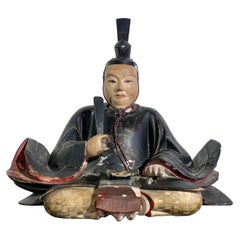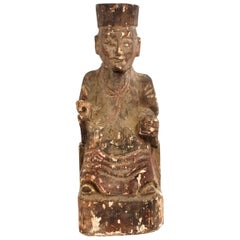
Japanese Wood Netsuke with a Wasp in a Pear, Nagoya School, 19th Century
View Similar Items
Want more images or videos?
Request additional images or videos from the seller
1 of 12
Japanese Wood Netsuke with a Wasp in a Pear, Nagoya School, 19th Century
About the Item
- Dimensions:Height: 1.74 in (4.4 cm)Width: 1.19 in (3 cm)Depth: 0.79 in (2 cm)
- Materials and Techniques:
- Place of Origin:
- Period:
- Date of Manufacture:1820-1850
- Condition:
- Seller Location:Milano, IT
- Reference Number:Seller: 11551stDibs: LU4250212747751
About the Seller
5.0
Recognized Seller
These prestigious sellers are industry leaders and represent the highest echelon for item quality and design.
Established in 2005
1stDibs seller since 2018
10 sales on 1stDibs
Typical response time: 1 hour
More From This SellerView All
- Large Wood Netsuke of a ShishiLocated in Milano, ITLarge wood netsuke of a shishi Kyoto school, 18th/19th century Height: 5.7cm The large netsuke with a very nice patina, showing the mythical creatu...Category
Antique 18th Century Japanese Sculptures and Carvings
MaterialsWood
- Japanese Wooden Buddhist Sculpture of Amida Nyorai, 16th CenturyLocated in Milano, ITThe Amitabha (Amida in Japanese) Buddha is shown standing with his hands forming the Amida raigo-in mudra. The face has a serene expression, with closed eyes under delicately arched brows and a severe face. The hair is arranged in rows of coils that also cover the "ushnisha", the protuberance on the head. The drapery is folded in elegant pleats falling from the shoulders to the feet. The antique sculpture is placed on a lotus flower which is located on a richly decorated base. Faith in Amida Buddha remained largely confined to a small segment of the Japanese population until the Kamakura Era (1185-1333) when it was popularized by new Pure Land sects committed to bringing Buddhism to the illiterate commoner. These sects expressed concern for the salvation of the ordinary person and stressed pure and simple faith over complicated rites and doctrines. Amida Nyorai...Category
Antique 16th Century Japanese Sculptures and Carvings
MaterialsWood
- Japanese Folding Screen with a Spring Landscape, Kano School, 19th CenturyLocated in Milano, ITThe scene is dominated by a plum tree in bloom under which a couple of paradise birds is courting. The screen is crossed by a luxuriant creek, a typical feature of the springtime.Category
Antique 19th Century Japanese Paintings and Screens
MaterialsPaper
- Pair of Japanese Screens with Flowers of the Four Seasons, 19th CenturyLocated in Milano, ITThis pair of screens belongs to a genre of lyrical paintings of flowers, grasses, and other plants that flourished around the middle of the 17th century and became a specialty of the Sôtatsu studio. The use of a rather complex composition of clusters of flowers and the puddling of ink was initiated by Tawaraya Sôtatsu, the founder of the Rimpa School, who was active from 1600 until 1642. The screens are abstract and decorative but there is, at the same time, a keen sense of naturalism not only in the attention to accurate detail but in the profusion of vegetation. The passage of the year is symbolized by the variety of plants that bloom in different seasons. The tarashikomi - here used on leaves, petals and trunks - is a Classic Rinpa technique in which pale black ink or a color is brushed onto an area of a painting and then either darker ink, or the same or a contrasting color, is dropped into the first before it has completely dried, creating an effect of pooled colors with softly blurred edges. Its delicacy, preciousness, and effeminacy are identified with the over-refinement of its patrons, while the vigor, monochromatic discipline, sharp observation, and virile forms of the Kano school are a testament to the vitality of the rising warrior class. The plants are almost all identifiable: in the summer-spring part, you can find wheat, buttercups, irises, begonias, hydrangeas, coral bells...Category
Antique 19th Century Japanese Paintings and Screens
MaterialsPaper
- Japanese Lacquered Cabinet ‘Shodana’ from the Arashiyama Museum, 19th CenturyLocated in Milano, ITThe construction of this antique shodana is somehow different and richer than the traditional Japanese model: even if in fact there are the fundamental elements, which are a lower compartment closed by two sliding doors and three intermediate shelves, in this piece, there are many other closed parts, including two drawers. More, there are several lacquered parts decorated in superior-quality maki-e even in places that generally are left empty. Panels are painted with gold lacquer with landscapes from the Genji monogatari; handles reproduce a sho, a rare antique musical instrument...Category
Antique 19th Century Japanese Furniture
MaterialsWood
- Five-Case Inrō 19th Century Signed Kajikawa Saku Japanese Lacquer BoxLocated in Milano, ITSigned: “Kajikawa saku” and with a red pot seal Height: 3 1/8in (7.9cm) Provenance: Michael Tomkinson Collection Leonard Haber Collection Literature: Michael Tomkinson, A Japanese Collection, London: George Allen, 1898, no. 300 Each case with slightly recessed joints and with different grounds, including kinji, nashiji, togidashi maki-e and gyobu-nashiji, on the obverse decorated with a treasure ship laden with the attributes of the Seven Gods...Category
Antique 19th Century Japanese Lacquer
MaterialsWood, Lacquer
You May Also Like
- Early 19th Century Japanese Wood Noh MaskLocated in Hudson, NYEarly 19th century Japanese wood noh mask, This mask comes in its original kiri wood storage box, which is signed and dated: Koran, 1811 (Edo period). The box...Category
Antique 1810s Japanese Edo Sculptures and Carvings
MaterialsGesso, Wood
- Japanese Carved and Lacquered Wood Shogun, Edo Period, 19th Century, JapanLocated in Austin, TXAn unusual Japanese carved wood, lacquer, and gilt decorated portrait sculpture of a shogun, Edo Period, early 19th century, Japan. The unidentified shogun (possibly Tokugawa Iey...Category
Antique Mid-19th Century Japanese Edo Sculptures and Carvings
MaterialsWood, Lacquer
- 19th Century Taoist Master Wood StatueLocated in Somis, CAVery old solid wood statue depicts the Taoist Zen Master. He wears typical Tao robe and hat, with two fingers pointing up, and the left hand on his knee. Su...Category
Antique Early 19th Century Chinese Sculptures and Carvings
MaterialsWood
- Pair of 19th Century Japanese Bronze Playful PuppiesLocated in Hudson, NYAntique bronze sculptures of puppies playing. Traces of gold on both, one holding tassels in its mouth. Measurements: 3 1/2" h x 6 1/2" w x 3 3/4" d and 4 1/4" h x 5 1/2" w x 3 3/4" dCategory
Antique Mid-19th Century Japanese Sculptures and Carvings
MaterialsBronze
- 19th Century Hand Carved Wood Baby Monk FaceLocated in Delray Beach, FLA beautiful 19th century Buddhist baby monk head, hand carved wood depicting the baby looking forward gracefully with like Mona Lisa kind smile?. Exceptional...Category
Antique 19th Century Thai Sculptures and Carvings
MaterialsWood
$425 Sale Price37% Off - 19th Cent Large Japanese Wood Okimono of a Bantam 'Rooster', Hen and Baby ChicksLocated in North Miami, FLA finely signed Japanese carved large cockerel with an impressive plume of tail feathers standing over his family consisting of a hen and baby chicks as they pick at the ground searc...Category
Antique 19th Century Japanese Animal Sculptures
MaterialsWood

